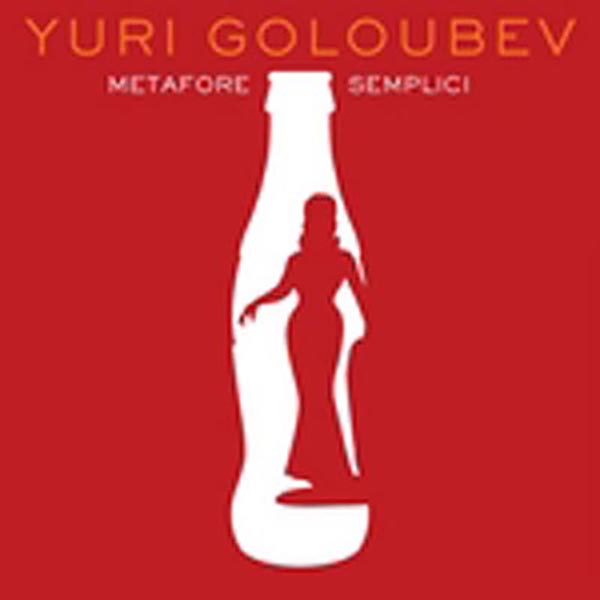
by Ian Mann
March 11, 2010
/ ALBUM
A fine album that should enhance Goloubev's growing jazz reputation
The Moscow born double bassist Yuri Goloubev recently appeared on Gwilym Simcock’s excellent double album “Blues Vignette” and performed as part of Simcock’s trio when the pianist played at The Edge Arts Centre, Much Wenlock in February 2010. It was here that Yuri was kind enough to give me a copy of his 2009 solo album “Metafore Semplici” for review purposes.
The bassist now lives in Milan and the album is a truly international affair with Goloubev being joined by Simcock on piano, Asaf Sirkis on drums, Italian trumpeter Giovanni Falzone plus German reeds man Klaus Gesing on soprano sax and bass clarinet.
Goloubev has a classical background having been principal bassist for both the Bolshoi Opera and the Moscow Soloists Chamber Orchestra. Since moving to Italy he has concentrated on jazz whilst bringing certain elements of his classical past to his playing. Goloubev and Simcock are kindred spirits in their desire to blur the boundaries between jazz and classical music. Goloubev’s contribution to “Blues Vignette” is immense and his use of the bow on that album almost unparalleled in jazz.
Although “Metafore Semplici” is unquestionably a jazz album it does borrow from classical forms and structures. The album is bookended and divided by a series of jazz adaptations of the classical Chorale form. Goloubev’s informative liner notes explain that these are based on the German “Lied” song form. The brief opening “Chorale IV” is a simple polyphonic melody stated by horns plus arco bass above Simcock’s piano chording and Sirkis’ shimmering cymbals. It’s all very courtly and tightly disciplined with trumpet and bass clarinet shading off into something more abstract as the piece draws to a close.
The lengthy, episodic “Gare De Lyon” is more conventionally jazzy, a cinematic portrayal of the comings and goings at the Gare de Lyon station in Paris. In Goloubev’s words “this piece is a romantic exploration of the stories this building must hold”. Goloubev’s lushly inventive writing frames solos from himself on virtuoso plucked bass and Simcock on limpidly flowing piano followed by Gesing on lyrical then sharply probing soprano. Sirkis drums up a storm as Gesing’s solo builds in intensity during the tune’s latter stages.
“San Gaudenzio” is more impressionistic with some wonderfully resonant bass from the leader sympathetically supported by Simcock and the disciplined but colourful drumming of the excellent Sirkis. The piece was inspired by the San Gaudenzio in the Italian city of Novara. Goloubev seems to find architecture a particularly rich form of inspiration.
Goloubev’s composition “Francesca da Ischia” was inspired by Tchaikowsky’s “Francesca da Rimini.” The piece originally appeared on the 2007 trio album “Intermezzo” led by pianist Glauco Venier and featuring both Goloubev and Sirkis. Here the piece has been expanded to include Gesing’s oboe like soprano. At a little under a minute and a half it’s little more than a brief but beguiling sketch.
Joey Hitchhiker” is a tribute to the great American pianist and composer Joey Calderazzo. Loosely based on Calderazzo’s classic composition “Midnight Voyage” it swings prodigiously and features a delightfully bluesy solo from trumpeter Falzone full of slurs, growls and all the other tricks of the trumpeter’s trade. Goloubev weighs in with a typically nimble plucked solo , there’s some slippery soprano from Gesing and a series of energetic drum breaks from Sirkis. The band sound as if they’re having a great time on this one.
The title track sees a return to more lyrical territory with Gesing’s soprano stating the elegant theme followed by solos from Goloubev and the thoughtful Simcock. Sirkis’ cymbal touch is a particular delight and Gesing’s soprano charmingly lyrical.
“Chorale III” has Falzone’s trumpet “rebelling” against the rest of the group. He conjures an extraordinary range of sounds from his instrument, it laughs, growls and sobs. Interesting.
A rainy day in the French capital provides the inspiration for “Parisian Episode III” with Gesing’s soprano sounding suitably wistful. Simcock’s solo is flowing and lyrical and there are further statements from Gesing, Goloubev and finally Sirkis on this appropriately episodic piece.
“Diaries” begins in similarly yearning fashion before shading off into something more abstract as Gesing’s probing soprano pushes the boundaries. The saxophonist who has recorded albums for ECM with both singer Norma Winstone (“Distances” 2007) and oud player Anouar Brahem (“The Astounding Eyes Of Rita” 2008) is excellent throughout the recording, his playing simultaneously lyrical, pure toned and exploratory.
The playful “Quack Pero” is another vehicle for the trumpet pyrotechnics of Falzone. The piece is playful and quirky and swings mightily once it gets going. Drummer Sirkis and bassist Goloubev also show up strongly on early features and Gesing is dazzling on bass clarinet.
“Vouz-Aimez Brahms” is based on the opening of the third movement of the composer’s Symphony No. 3 in F major, one of Goloubev’s favourite classical works. It’s suitably elegant and lyrical with Falzone this time playing it straight with a beautifully flowing and controlled solo. Simcock is wholly at home in this environment and his solo is both beautiful and inventive and Gesing also makes a telling contribution. It should also be noted that the album as a whole features Sirkis at his most sympathetic.
“Chorale IV” bookend the album with a “reduced” version of the opening piece. “The curtain coming down after the drama” as Goloubev puts it.
“Metafore Semplici” is a beautifully recorded album that does it’s own bit to bridge the worlds between classical and jazz. Goloubev’s writing is imaginative and colourful and everybody plays superbly. The bassist subtly dictates proceedings and allows himself plenty of solo space. Surprisingly given the quality of his work with the bow on Simcock’s album there’s comparatively little arco playing here. On his own records Goloubev clearly prefers to play in the conventional jazz pizzicato manner. Nevertheless this is a fine album that should enhance Goloubev’s growing jazz reputation.
blog comments powered by Disqus